FROM the Land of the Rising Sun comes a city that has played a more dominant role than any other in the country’s celebrated history. A spectacular city of Emperors; a fabulous city of culture; an illustrious city that would have done its nation proud should it have symbolised the big red dot at the centre of the Japanese flag!
Before You Get There
Let your finger hover over the dot before you take the plunge, and read Robert Shea’s Shike, Dale Furutani’s The Toyotomi Blades and Arthur Golden’s Memoirs of a Geisha. Your investment in time will be richly rewarded with a much deeper understanding of the momentous individuals and events that shaped the Kyoto we see today. Lonely Planet and other travel guides will provide you with the necessary historical background – that Kyoto became the capital of Japan in the 8th century where it flourished as the centre for Japanese politics, economy and culture for some 1,100 years, until the capital were transferred to Tokyo in the mid-19th century – but delving into these outstanding novels will people that history and inject it with the passions, feelings, bravery and sacrifices that will enthral you long before arriving in the Kyoto basin.
How To Get There
The majority of foreign travellers fly into Tokyo or Osaka’s offshore Kansai International Airport. From Kansai, board a bus at stop no. 8 (outside Terminal 1), at stop no. 1 (outside Terminal 2) or catch the Japan Rail Haruka limited express for the 1hr 30min journey to Kyoto Station.
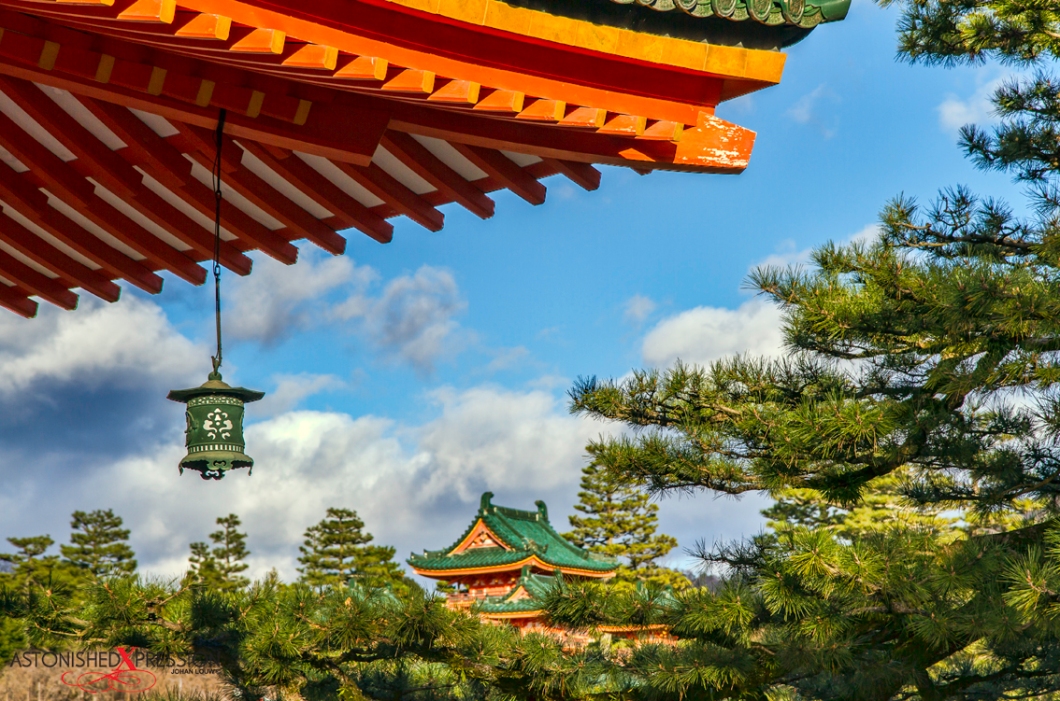
Accommodation
One of the unforgettable experiences of visiting Japan is to stay at a ryokan or capsule hotel.
A ryokan is a traditional Japanese inn that typically features a room with tatami mats, sliding doors and common bathing areas. Some have a porch or balcony and a few very exclusive ryokan may even offer an onsen (hot spring) to soothe the weary traveller.
Most ryokan will offer meals, which consist of traditional Japanese cuisine known as kaiseki. The elaborate meal of small dishes is served individually in a communal dining area but more commonly in your room.
A budget ryokan is known as a minshuku.
Capsule hotels, as the name suggests, is cheap and basic overnight accommodation in small capsules large enough for one person to sleep in. They mostly cater for Japanese businessmen, but some offer separate quarters for female guests.
Most commonly, the hotel will provide their guest with a locker in which to store personal belongings. The guest will have access to a communal bathing facility and don a yukata gown prior to retiring for the evening.
Recommendation:
Ryokan: Tanaka-ya or Kyomachiya Ryokan Sakura
Ryokan-Onsen: Seryo in Ohara outside Kyoto
Capsule hotel: 9h
Cuisine

Kyoto is the capital of traditional Japanese fare. This is where to indulge in aristocratic kaiseki ryori – Japan’s multi-course haute cuisine consisting of an aperitif (shokuzen-shu), bite-sized appetizers, soup (suimono), sashimi (otsukuri), a boiled dish (nimono), a grilled dish (yakimono), a deep friend dish (agemono), a steamed dish (mushimono), a vinegared dish (sunomono), rice, miso soup, pickles (tsukemono) and sweets. Try Gion and Pontocho for restaurants that serve kaiseki ryori.
The chef has wide latitude in including or omitting dishes based on produce in season and individual style.
Vegetarians should try shojin ryori, historically favoured by monks. Tofu is a common ingredient at these restaurants. Yudofu, soft tofu simmered in a vegetable broth, is a local favourite. Arashiyama and Nanzenji districts offer the best bet for tofu cuisine.
Home style cooking is called obanzai ryori. Restaurants serve multiple small dishes that are simple to prepare but rich and tasty. Obanzai ryori establishments can be found all over Kyoto.
Summer witnesses kawayuka, the practice of taking meals outdoors over flowing water – a wonderful way to enjoy traditional Japanese cuisine! Search for them from May to September in the vicinity of Pontocho or Kibune and Takao north of central Kyoto.
Fusion restaurants and stores offering regular Japanese food such as ramen, sushi and udon is plentiful throughout Gion, at Kyoto Station and at Nishiki Market. Meals can also be taken in machiya, historic merchant houses that serve a variety of delicious dishes in long, narrow wooden buildings consisting of rooms linked by a single corridor.
Recommendations:
Transport
Kyoto is a very walk-able city and should be the primary mode of locomotion, particularly in areas such as Gion. Cycling is another healthy, environment-friendly and enjoyable way of immersing yourself in Kyoto’s scenic delights and the ideal method of transport from Kyoto Station to many primary destinations.
Buses, the subway and cabs serve destinations beyond walking distance. The Karasuma line runs north to south through Kyoto, while the Tozai line serves suburbs to the east and west. Tickets can be purchased from vending machines (with English instructions) inside the stations.
Municipal and tourist buses are popular among sightseers and beats out the subway in getting close to most tourist attractions. Taxis are available day and night (which has a late-night surcharge).
Recommendation:
Attractions
Kyoto has an embarrassment of riches that demands visitors invest generously in time allocation. These are some of the highlights:
Sagano Bamboo Path
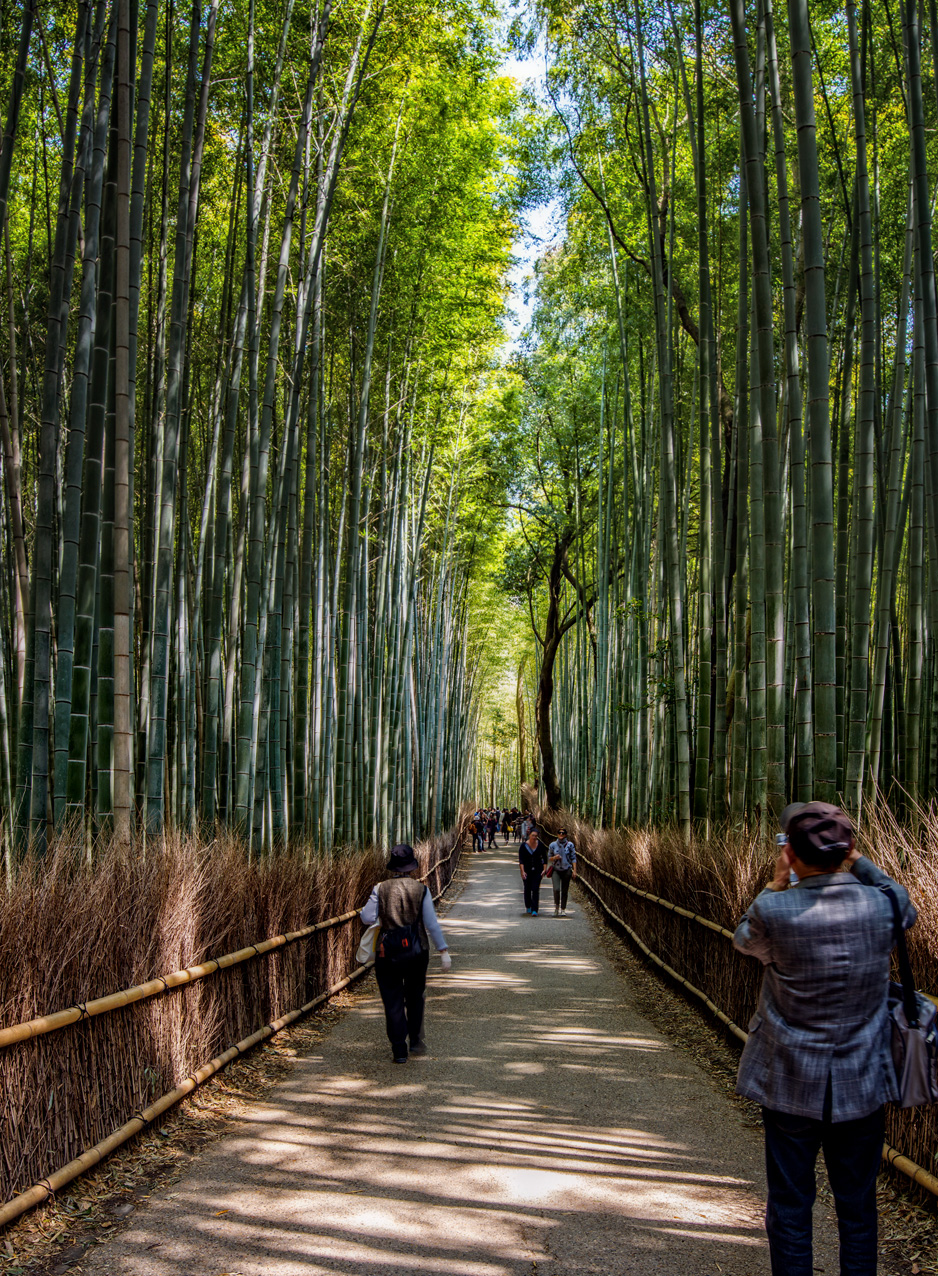
The JR Sagano Line whisks you on a 16-minute journey to Arashiyama, a leafy suburb in the western outskirts of Kyoto overflowing with jaw-dropping sights. There are several scenic temples and shrines, such as Tenryu-ji, Nonomiya-jinja, Jojakko-ji, Nison-in and Gio-ji, but the swaying bamboo forest of Sagano is the principal attraction. Jutting upwards from either side of a forest pathway, the bamboo creaks gently in the breeze – an experience ethereal in its simplicity and beauty. Visit in the afternoon, and head down towards the Oi River for a wonderfully scenic cruise while the dipping sun paints the Japanese landscape in pastel hues.
Ginkaku-ji Temple
On the opposite side of the Kyoto basin from the Golden Pavilion, Ginkaku-ji, or the Silver Pavilion, played a significant role in Kyoto history as the focal point for the Higashiyama Culture. Where the preceding Kitayama Culture remained limited to the Heian-kyo’s aristocratic circles, Higashiyama introduced the arts to a wider audience, developing and refining the team ceremony, flower arrangements, noh theatre, poetry, garden design and architecture. The Togu-do Hall’s Dojinsai is the prototype for traditional tea pavilions.
Path of Philosophy
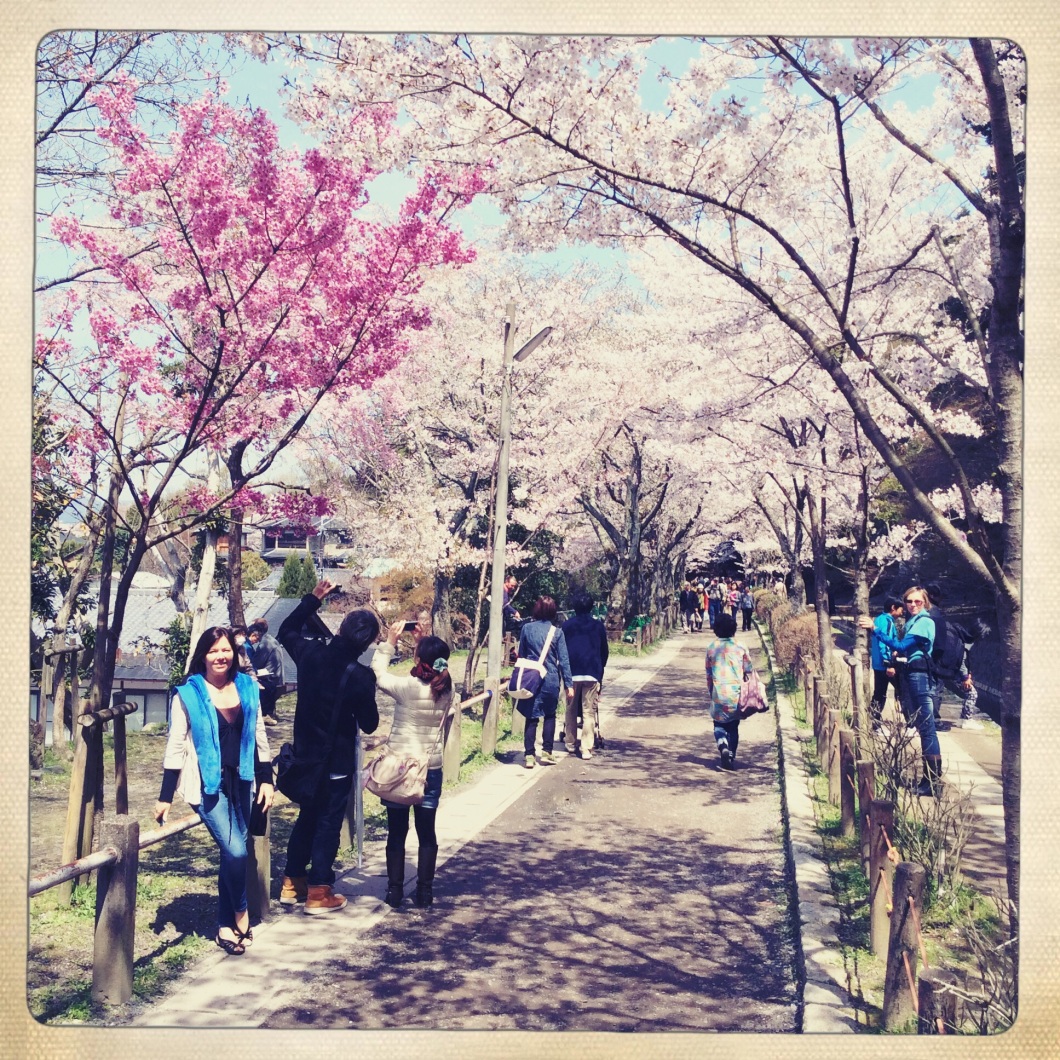
The Silver Pavilion is also the ideal point from which to embark on the Path of Philosophy – a meandering stone path alongside the banks of a canal peacefully wending its way through Higashiyama district. The path got its name from famous Japanese philosopher Nishida Kitaro who meditated while strolling along the quaint canal. The best time to visit is in spring when hundreds of cherry trees explode into a riot of colour and Japanese girls dressed in traditional kimonos charm international travellers.
Nanzen-ji Temple
Originally the 13th century retirement villa of Emperor Kameyama, it was later converted into a Zen temple. The massive Sanmon gate was constructed in 1628 by the Tokugawa clan for soldiers who died in the siege of Osaka Castle in 1615. Nearby Konchi-in Temple is a sub-temple of Nanzen-ji.
Eikan-do Temple
Beautiful gardens with stunning autumn colours illuminated at night during fall. The former Shingon sect temple founded by a disciple of the great Kobo Daishi was converted to the Jodo or Pure Land sect by a later head priest.
Kiyomizu-dera Temple

Perhaps the most loved of all Kyoto’s temples and certainly one of the most scenic, rising from the wooded hills on 13m tall columns with commanding views from the east facing west towards Kyoto. The main hall contains a priceless statue of Kannon Bodhisattva, the goddess of mercy. The Otawa Waterfall at the base of the main hall produces three streams, each said to have unique benefits: longevity, success at studies and a happy love life. Visitors use cups to catch and drink the water, but to drink from all three streams is considered greedy. Jishu Shrine dedicated to love and matchmaking is behind the main hall.
Hokan-ji
It is difficult to miss the flapping wings of Hokan-jiTemple as the 40m tall pagoda appears ready to take flight from the old Higashiyama district. Founded in 589, shogun Yoshinori Ashikaga ordered renovations in 1440 at which time the temple was raised from the ashes of a fire around a huge wooden shaft.
Ryozen Kannon War Memorial
An 80-foot concrete embodiment of Ryozen Kannon marks the spot where the Japanese pay homage to the two million Japanese soldiers who died during World War II. Inside the shrine is an altar that contains soil from every cemetery in the Pacific Theatre.
Kodai-ji
Toyotomi Nene constructed Kodai-jiTemple in memory of her husband, Toyotomi Hideyoshi. The Otamaya, a small mausoleum behind the memorial hall, is dedicated to both Hideyoshi and Nene. The meticulously landscaped garden, especially in autumn, is a feast for the eye.
Miyagawa-cho

Gion is where they work, but the enclave of Miyagawa-cho is where geiko (Kyoto dialect for geisha) and maiko (apprentice geiko) train and live. One of the most intriguing interactions I have ever witnessed happened in this quaint enclave.
I saw a maiko walking down the street having just exited an okiya (dwelling) when she chanced upon a geiko coming from the other direction. The maiko immediately stepped aside and bowed respectfully to honour her elder. The geiko elegantly acknowledgement the gesture and exchanged a few friendly words before continuing on her way. An exquisite cultural moment!
Gion
Gion is Kyoto and probably Japan’s most famous hanamachi or geiko district. It lies in the centre of Kyoto between Kamogawa River and Yasaka Shrine. It is filled with ochaya (teahouses where geiko’s entertain), merchant houses, theatres, restaurants, shrines and shops. As the sun sets over Kyoto, photographers rush to Gion in the hope of catching a fleeting glimpse of a geiko or maiko attending an entertainment venue. Ichiriki Ochaya is the most famous teahouse in Japan. Access is by invitation only and entertainment cost upwards of 800,000 yen or US$8000 a night.
Chion-in
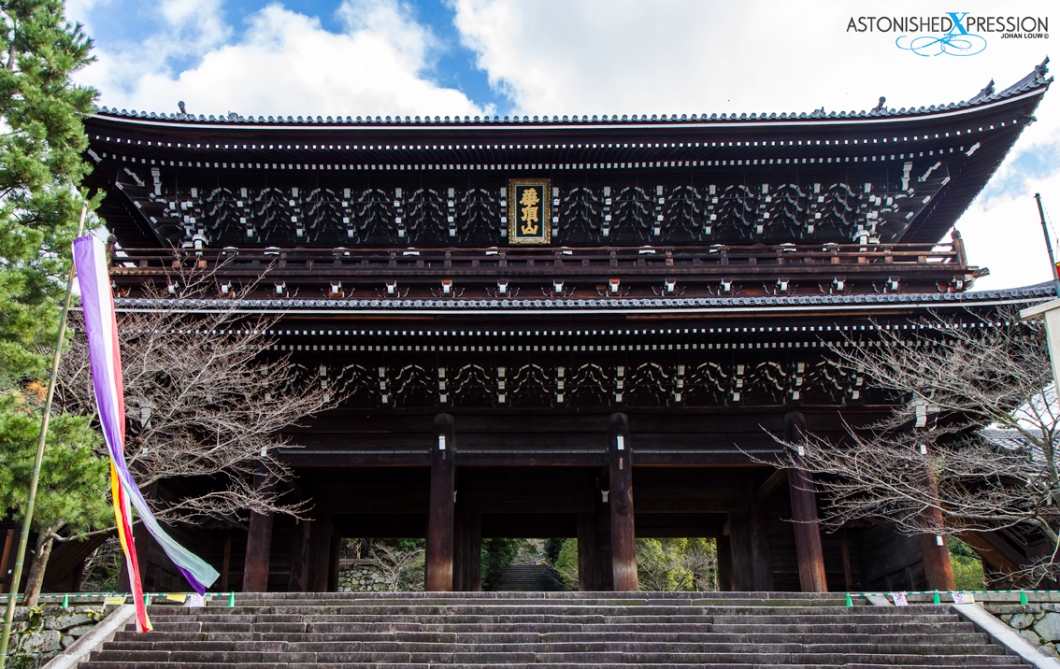
The Sanmon Gate, at 24m tall and 50m wide, is the largest wooden gate in Japan and welcomes visitors to the head temple of the Jodo sect of Japanese Buddhism. The Miedo Hall contains a statue of the founding priest of the Jodo sect, Honen. Chion-in also boasts the largest bell in Japan, reputedly weighing more than several city buses!
Heian-jingu Shrine
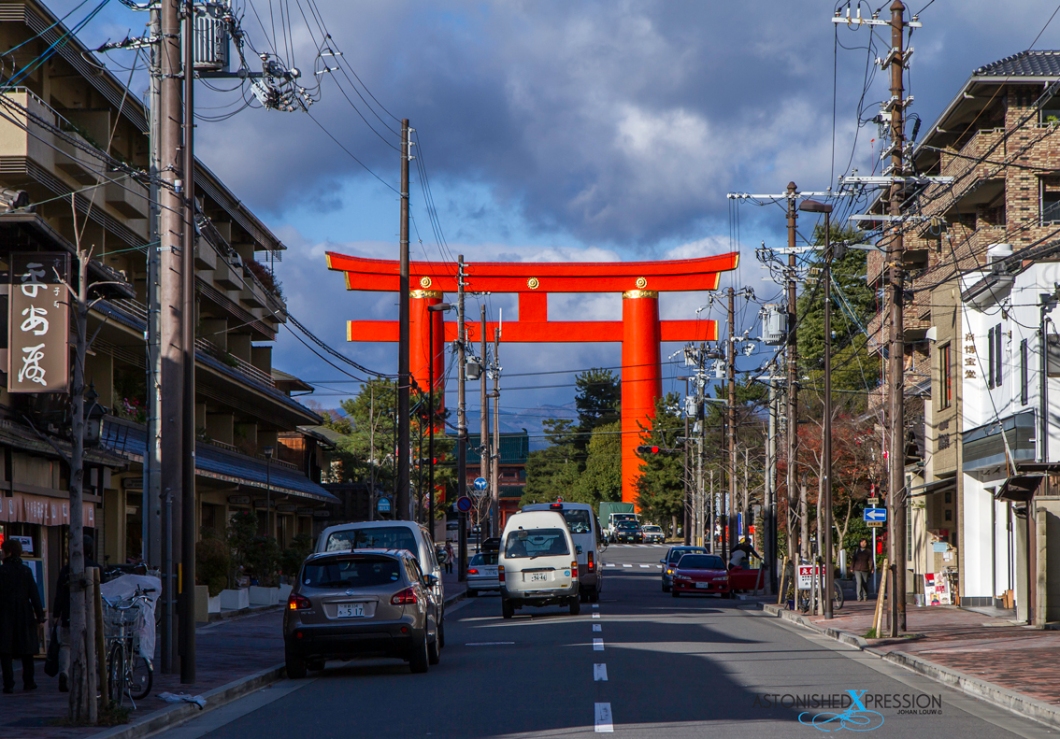
Not to be outdone by Chion-in, Heian-Jingu has the largest Torii gate in Japan. Elegant and colourful buildings rest in four large gardens in a partial replica of the Imperial Palace during the Heian period.
Ponto-cho
Ponto-cho is a narrow and atmospheric entertainment laneway on the opposite side of the KamogawaRiver from Gion. The cobbled lane illuminated by flickering lanterns and occupied by a cosmopolitan clientele extends from Shijo-dori to Sanjo-dori.
Fushimi Inari-taisha Shrine
Famous in travel brochures the world over, this is where 5000 vibrant orange torii gates mark Japan’s most important shrine dedicated to the god of rice, Inari. The torii gates wind their way through emerald forests, lit up at night in a spectacularly exotic display.
Tofuku-ji
Another superb venue to admire Kyoto’s autumn foliage! The spectacularly landscaped gardens use moss, pebbles, stone, rocks, trees and pools to offset magnificent Buddhist architecture. The 22m tall Sanmon gate, built in 1425, is the oldest Zen main gate in Japan.
Sanjusangen-do
Founded in 1164, the current structure dates from 1266 and is most noteworthy for a collection of 1001 statues of Kannon Bodhisattva, the goddess of mercy, housed in the longest wooden building in the world (118m). The main image of a seated Kannon is thought to be sculpted by Tankei and regarded as a Japanese national treasure.
Nijo-jo

This was the residence of the Tokugawa shoguns who ruled Japan from 1603 to 1868. The massive stone walls, imposing palace, scenic gardens and wide moat in the centre of Kyoto stand silent testimony to the might of the Tokugawa shogunate.
Kyoto Imperial Palace
The Kyoto Imperial Palace located in Gyoen Park was the residence of the Imperial family until the capital moved to Tokyo in 1868. A roofed earthen wall forms the perimeter of the Palace grounds, which include the Shishin-den (ceremonial hall), Seiryo-den (Palace Hall) and Kyogosho (minor palace). Spring is the best time to visit, when the Imperial Palace throws open its doors to the public for five days. Enter through the Gishumon Gate from around 9am and exit via the Seishomon Gate prior to 4.15pm.
Nishijin Textile Centre

Dating back some 1,200 years, Nishijin grew from a need to manage the production of textiles and luxury fabrics for Heian-kyo court nobles. Despite a setback during the Murumachi Period (1338 to 1573), weavers returned to Kyoto after the Onin War and flourished under the patronage of great Samurai lords such as Nobunaga Oda and Hodeyoshi Toyotomi. Don’t miss the kimono show, several of which are held throughout the day.
Teramachi Shopping Arcade
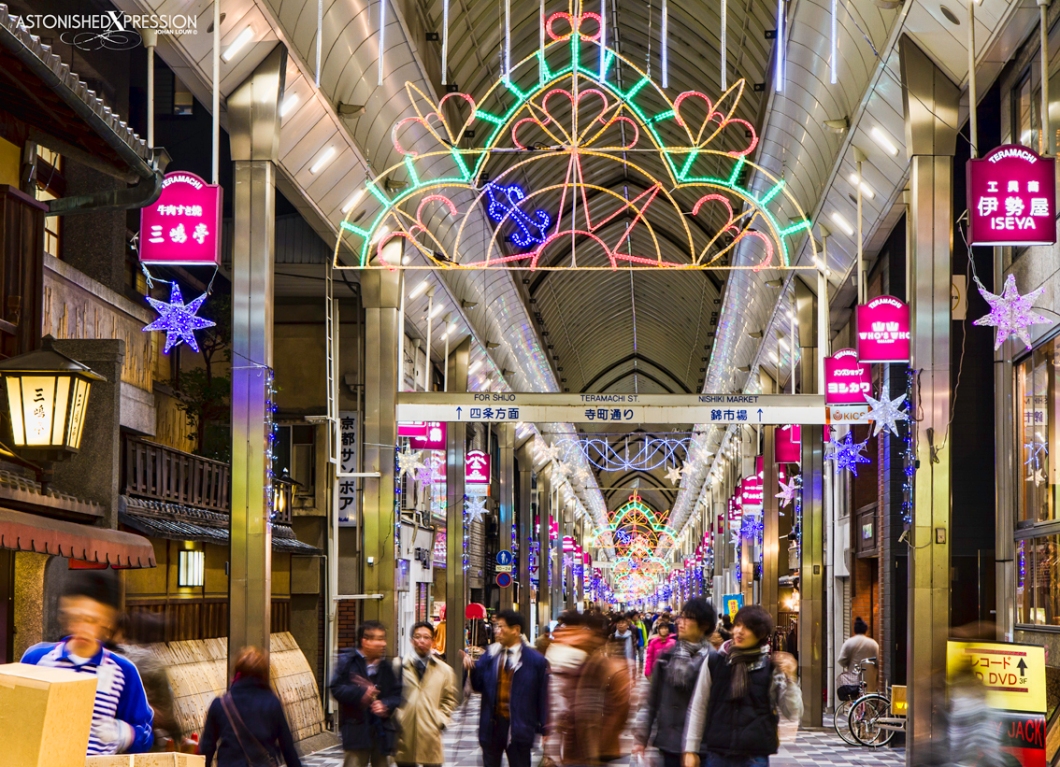
An extended covered arcade with a number of interesting stores, such as Kyukyodo, an apothecary that date back to 1663. There are a number of food stalls that offer tasty treats and meals to visitors.
Ninna-ji
On the western outskirts of Kyoto, Ninna-ji sports a five storey pagoda, beautiful landscaped gardens complete with ponds, step bridges, raked gardens, teahouses and impressive prayer halls. An ideal location to view late blooming cherry blossoms!
Ryoan-ji
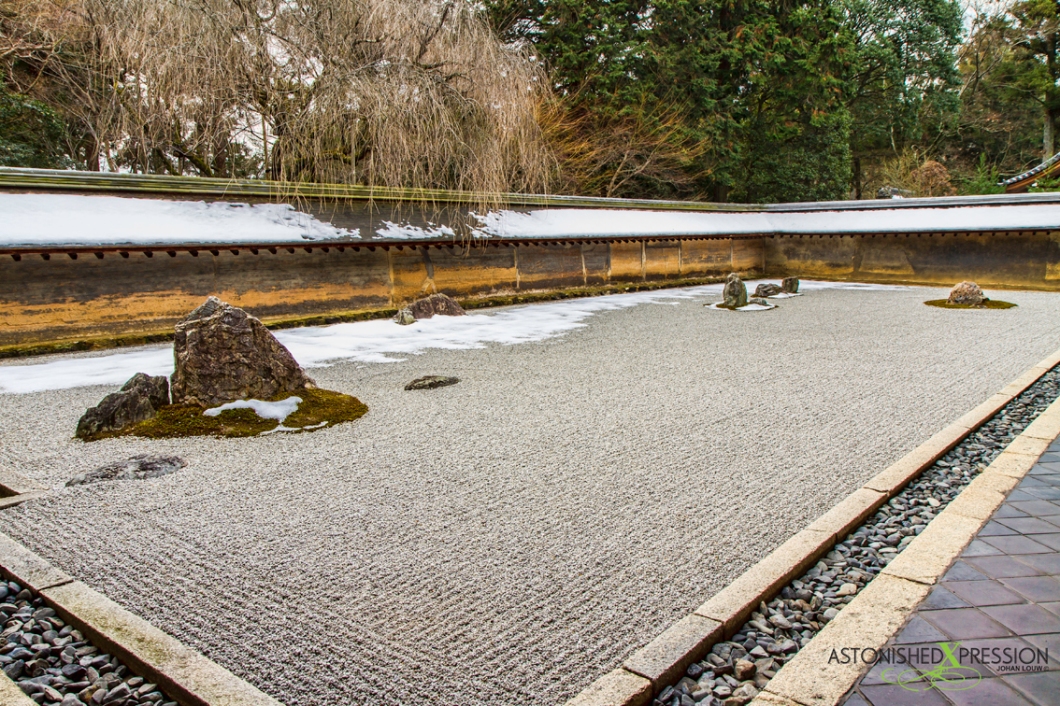
One of the most famous temples in Japan thanks to its mysterious rock garden that attract visitors from all over the world. The garden consists of 15 rocks placed strategically in raked white gravel with a viewing platform from where visitors may have an unimpeded view of the outlay – and never see all 15 stones at the same time!
Kinkaku-ji
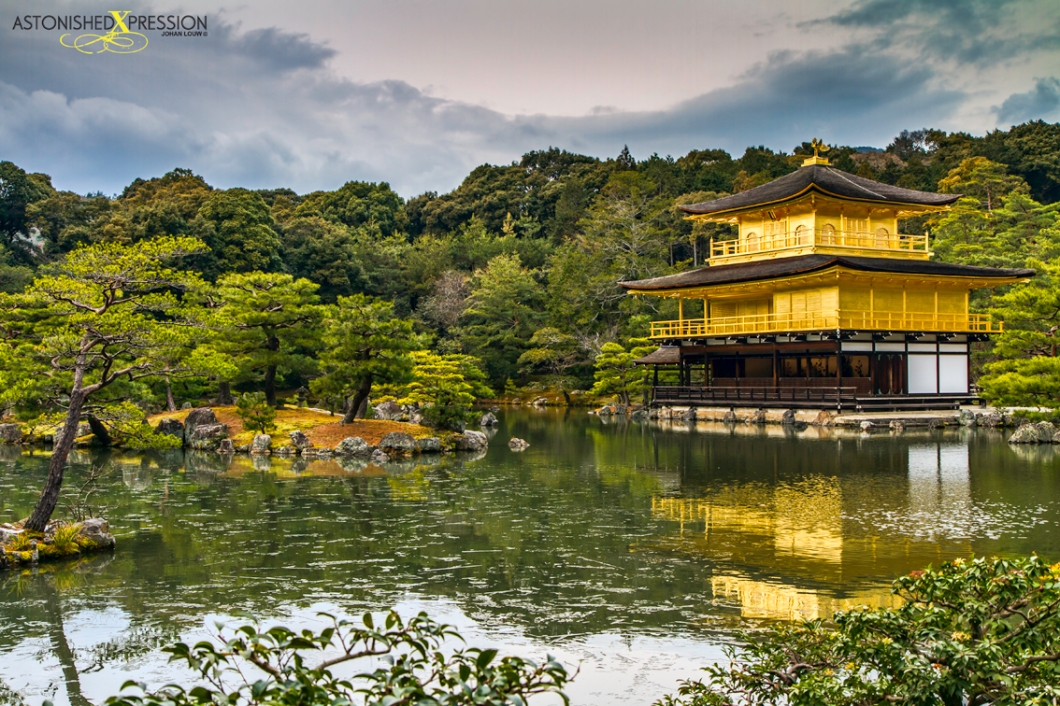
Kyoto’s most beautiful temple! Known far and wide as the Golden Pavilion, this was the 13th century home of the third shogun Yoshimitsu. The building consists of three tiers; the first floor is constructed in the Shinden zukuri or palace style, the second in Buke zukuri or samurai style and the third floor in Karayo or Zen temple style. The second and third storeys are covered with gold leaf on Japanese lacquer.
Daisen-in Temple
A sub-temple of Daitoku-ji, Daisen-in boasts one of the foremost gardens in Japan! Known as Karesansui, the stone and sand garden expresses the flow of water from the mountains to the sea with the aid of trees and plants but no water. The main hall or abbot’s chamber is also a fine example of Zen aesthetics with sliding screen door paintings of flowers and birds done in Chinese monochrome style.
Kitano Tenman-gu Shrine
Another scenic shrine with over 2000 plum trees from 50 varieties that bloom from February to March! This is where Sugawara Michizane, patron deity of learning, is enshrined.
Kamigamo-jinja
Experience a fabulous air of purity as you path beneath the torii gate and enter the large sacred grove. The path continues into the forest, leading to the shrine’s main hall. Two conical mounds of white sand provide the platforms on which the gods descend. Nearby, two streams gently murmur their passage of serenity…
Shimogamo-jinja
Yet another mystical green lung for quiet contemplation… The Tadasu-no-mori, or forest, dates back centuries and is a fitting resting place for the creator and guardian of Kyoto, Kamotaketsunomi-no-mikoto.
Nishi Honganji
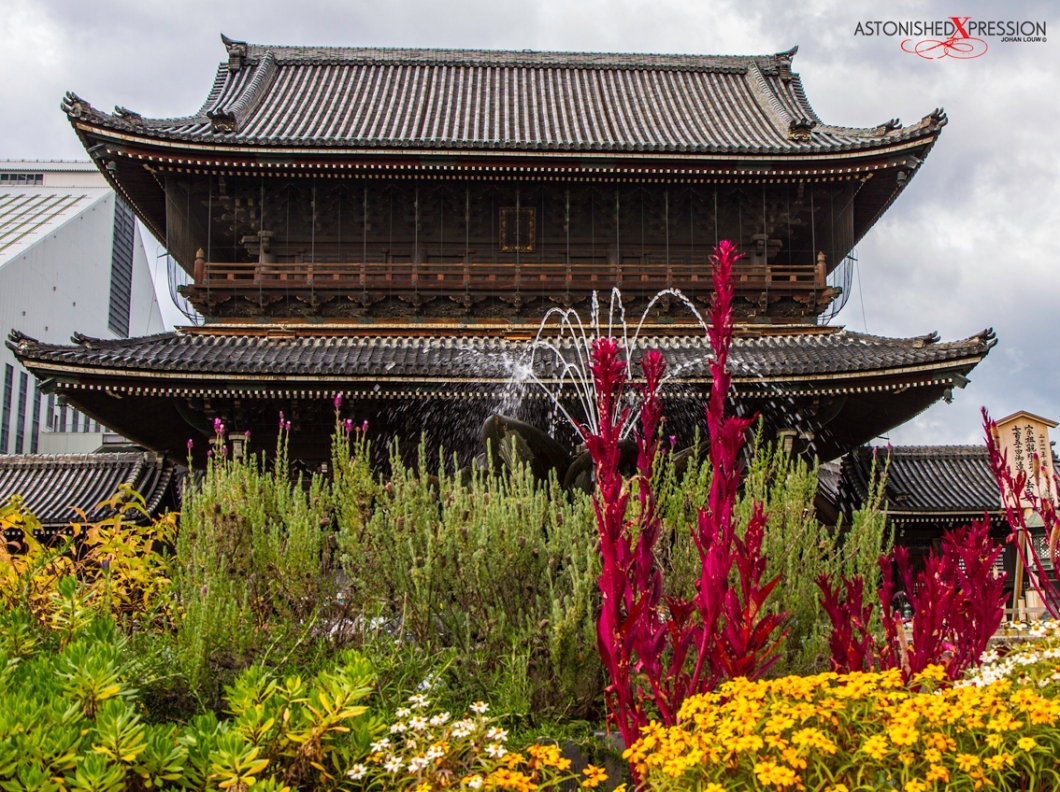
This head temple of the Honganji faction of the Jodo-Shin sect of Buddhism is a UNESCO world-heritage listed site. The Goeido Hall, dedicated to the sect’s founding father Shinran, and Amidado Hall, dedicated to Amida Buddha, are the largest structures. Another architectural masterpiece is the Hiunkaku Pavilion.
Kyoto Wholesale Market
Touted as a fifth the size of Tokyo’s famous Tsukiji Market, Kyoto’s version offers much the same, only on a more intimate and relaxed scale. While the market devotes itself primarily to fresh and traditional vegetables, visitors may also visit the early-morning tuna auction. The market is south of the intersection of Godo-dori and Senbon-dori.
To-ji
The temple is situated south-west of Kyoto’s railway station and is a city landmark. It consists of the Kondo Hall; Kodo Hall, which houses 19 statues imported from China by head priest Kobo Daishi more than 1200 years ago; a 27m tall five storied pagoda; and Miedo Hall. On the 21st of each month a popular flea market draws excited patronage from locals and travellers alike, eager to purchase pottery, food, plants, toys, antiques, or even a kimono.
Kyoto is a feast for all the senses. It wows without being pretentious or bawdy. The perfect counterpoint for the dynamism of Tokyo and the energy of Osaka. Together they form a perfectly balanced triangle that will have visitors returning again and again.
See Japan in cherry-blossom season!
Visit the Temple in Tokyo where history comes to life!
I love hearing what you have to say!
Please brighten up my day by COMMENTING below or introducing yourself on FACEBOOK, GOOGLE+ or TWITTER!
If you enjoy what I have to offer, please share this page. Thank you for helping me make this blog a success!

Wow, you covered just about EVERYTHING in Kyoto! The last time I went was in 2007. I was a bit under the weather during my 2 days there so my memories of the city are a bit spotty. I would love to go back there again someday. Will totally use this post when it comes time to plan that trip.
Happy you’ll find it useful. Thinking of going next year, perhaps for the cherry blossoms!